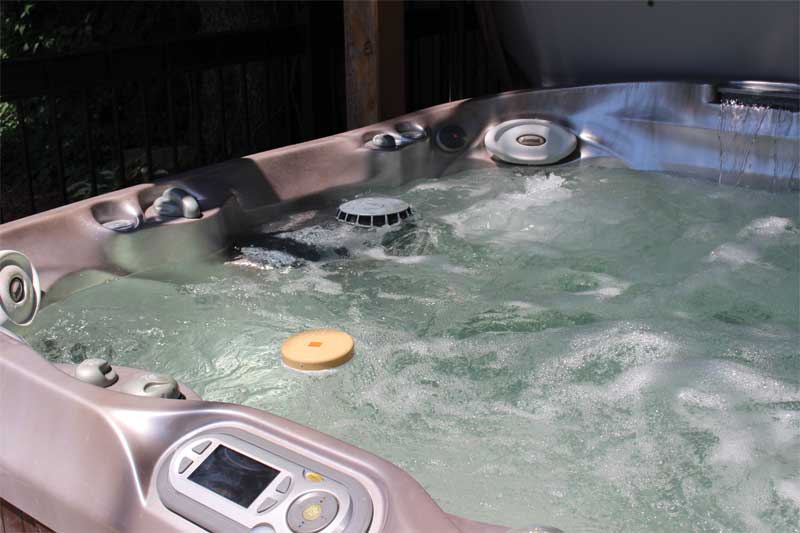Preventing biofilm

Some water conditioners will work to prevent the proliferation of biofilm. The combination of ingredients can suspend organic particles circulating in the water, including microbes. While in suspension, they do not associate to any degree. At the same time, the conditioners have similar effects on clean surfaces, preventing the deposition and association of bacteria and organic debris.
If microbes cannot associate, they are less able to begin biofilm construction. While water conditioners do not destroy, kill, or remove biofilm, they can help to prevent its formation. Water conditioners also have a buffering capacity that assist sanitizers in the water to allow them to function optimally, which further reduces the number of viable microbes that can lead to biofilm formation.
Other water conditioners promote the suspension of floating organics so they do not settle. They flow with the water to the filter where they will be trapped and removed once the filter is rinsed during routine hot tub maintenance.
Removing biofilm
If proper sanitizer levels in a hot tub are inadequate, it is highly likely that biofilm is present. At this stage, the hot tub should be flushed out using a plumbing line purge product. In fact, this regimen should be followed every time a hot tub is drained and refilled.

The belief of pouring copious amounts of liquid or granular chlorine into the hot tub and running the jets on high will do the trick is not effective and will not kill all of the bacteria. This practice will not completely clear the lines of organic buildup.
The proper way to remove biofilm buildup from the hot tub’s plumbing is to use a product that combines surfactants and scouring agents that foam and thoroughly cleanse the piping and tubing throughout the cavity beneath the hot tub. These cleaners degrade the polysaccharides, exposing the contents the surfactant then suspends.
If the hot tub has been in use for many months, a plumbing cleaner can be used for a fresh start. This will dislodge chunks of black, green, or dark-coloured matter that will come out of the jets. After completing this process, the hot tub should be drained as planned—only this time it will be free of biofilm.
The root cause
When working in his test centre in Vancouver, B.C., this author routinely examines many manufacturer and product claims and how various chemicals interact to solve water care issues in the hot tub industry. According to this author’s findings, the lack of basic routine hot tub water care is typically the origin of many consumer problems.
Many owners find hot tub upkeep and water maintenance to be challenging, and they certainly do not want to play the role of part-time chemists at home; however, it does not have to be a labourious or tedious process. Owners who sanitize regularly and purge with a plumbing cleaner during every drain and refill will not only make their hot tub easier to maintain, but also ensure their water is clean and safe from harmful bacteria. In turn, this allows them to enjoy their hot tub and take advantage of all the health and wellness benefits it has to offer.
 Colin Taylor, B.Sc., MIScT, is a chemist for SilkBalance, a hot tub water care company based in Vancouver, B.C. He has been involved in addressing several hot tub water maintenance problems and focuses on resolving and simplifying them. One example is the reduction of hot tub cleaning time from one day to one hour. Taylor also answers many e-mail questions from hot tub users around the country. He can be reached via e-mail at colintaylor@silkbalance.com.
Colin Taylor, B.Sc., MIScT, is a chemist for SilkBalance, a hot tub water care company based in Vancouver, B.C. He has been involved in addressing several hot tub water maintenance problems and focuses on resolving and simplifying them. One example is the reduction of hot tub cleaning time from one day to one hour. Taylor also answers many e-mail questions from hot tub users around the country. He can be reached via e-mail at colintaylor@silkbalance.com.






